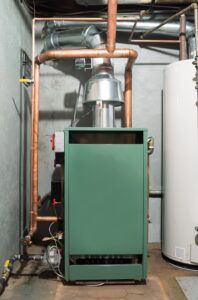One of the major hangups that people still have with gas furnaces is the safety factor. Just saying the phrase “gas furnace” when compared to an electric furnace feels more dangerous, even if it isn’t based in facts.
To be truthful, there are plenty of electrical fires and safety hazards caused by electrical heating systems and space heaters as well, so there’s nothing inherently more dangerous about a gas furnace than an electric furnace. But one of these systems does use combustion to heat your home, and only one of them has been responsible for house fires, explosions, and carbon monoxide poisoning.
But how does a furnace manage safety? What components require furnace repair in Charlotte if you want your furnace to remain safe? That’s what we’re going to cover in this blog today.
Hopefully, after this blog post, you can rest easy knowing that a gas furnace is perfectly safe to have in your home.
The Heat Exchanger and Port Exhaust
Let’s cover the most basic and important component of your furnace’s safety mechanics: the heat exchanger and it’s buddy, the port exhaust. When combustion happens, there’s a component that keeps the breathable air of your home separate from the fume-laden air of the combustion process. The heat exchanger is this component: it’s clam-shaped metal walls keep the fumes away while your clean, breathable air is heated up and sent into your home.
Then, the contaminated air is jettisoned outside through the port exhaust so it never comes in contact with you or your home at all. This is the first and most important way that your gas furnace keeps you safe. It separates the combustion air from your breathable air with a remarkably sturdy component.
But if you feel like something is wrong with your heat exchanger, or you’re detecting fumes or gas in your home, then something might require professional support.
The Flame Sensor
Next up is a special component called the flame sensor. This component monitors the burning of gas in the combustion chamber of your furnace to ensure it’s working properly. If you’ve ever wondered about your furnace leaking gas instead of burning it, then you’ll be happy to learn that this component protects you.
The flame sensor’s entire job is basically to ensure that the gas is being burned inside of the system. If it’s not for any reason, the flame sensor signals to the furnace to shut off access to the gas line so that gas doesn’t leak into your house. You’ll still need to get your system fixed before it can work properly, but at least you won’t need to worry about a gas leak.
The Electric Ignition
Old furnaces used to use pilot lights which were basically flames running at all hours of the day. These were dangerous and extremely inefficient. Newer, electric ignition systems can save you money on gas and they’re much better at making sure that you don’t have a fire hazard in your house. As long as your furnace is modern and more up-to-date then you’ll likely have an electric ignition system to help smooth the combustion process over so it’s safer in your home.
You can always trust Ace Hardware Home Services. Just Call Ace Hardware Home Services!


